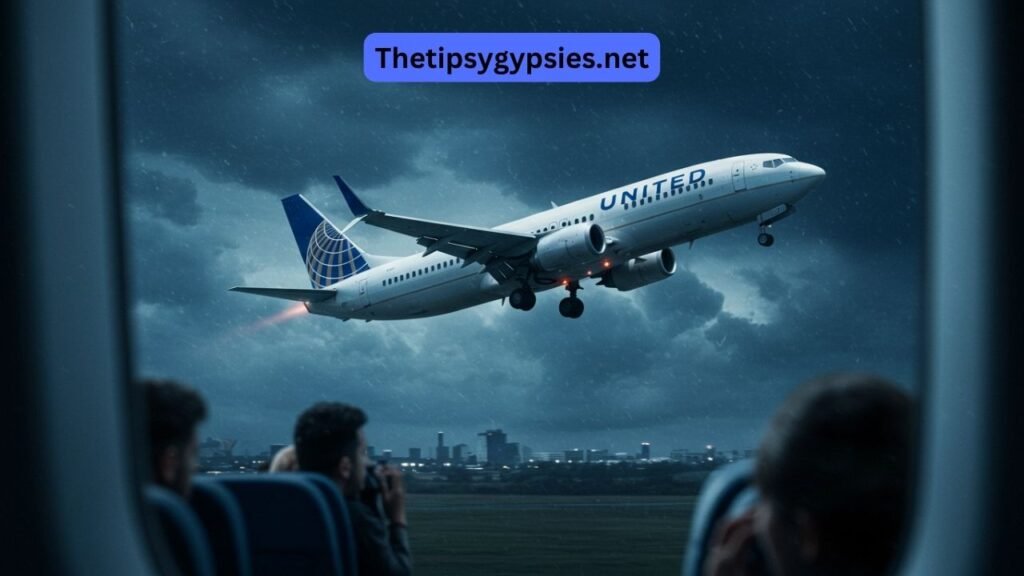United Airlines Flight UA770 Emergency Diversion: A Detailed Look into the Incident
On July 28, 2025, United Airlines Flight UA770 made headlines following an unexpected emergency diversion mid-flight. Scheduled to travel from San Francisco to Chicago, the aircraft was forced to divert to Denver due to a suspected mechanical issue. The event has sparked conversations about flight safety, airline preparedness, and emergency protocols.
Incident Overview: Flight UA770’s Unexpected Turn
United Airlines Flight UA770 took off from San Francisco International Airport (SFO) around 7:30 AM, en route to Chicago O’Hare International Airport (ORD). Roughly 90 minutes into the flight, the crew detected unusual indicators related to one of the aircraft’s critical systems. As a safety measure, the captain declared an emergency and rerouted the aircraft to Denver International Airport (DEN).
Although such decisions may appear drastic to passengers, they are rooted in stringent aviation safety standards designed to protect lives above all else.
The Reason Behind the United Airlines Flight UA770 Emergency Diversion
According to early statements from United Airlines and aviation experts, the emergency diversion was prompted by a warning related to the aircraft’s hydraulic system. These systems are essential for controlling flight surfaces, landing gear, and braking systems.
The warning didn’t confirm a failure, but any anomalies in these systems can escalate quickly. Rather than risking continued flight to Chicago, the flight crew opted for a diversion to Denver, the closest major airport with advanced emergency infrastructure.
Such diversions are a testament to the “safety-first” culture that modern commercial aviation upholds.
Crew Response: A Model of Professionalism and Calm
A standout element of the United Airlines Flight UA770 emergency diversion was how calmly and professionally the crew handled the situation. As soon as the warning signal was identified, the pilot announced the diversion and kept passengers informed at every stage of the process.
Flight attendants moved through the cabin, checking seat belts, assisting elderly passengers, and preparing everyone for a possible emergency landing—although none was ultimately required. According to multiple passenger testimonials, the environment inside the plane remained orderly and calm.
Passenger Experiences During the Diversion
Passengers aboard United Airlines Flight UA770 shared a mix of emotions—ranging from initial anxiety to relief—following the safe landing. Many turned to social media to recount their experience.
One passenger wrote on X (formerly Twitter), “Shoutout to the UA770 crew. They kept us informed and calm. Unexpected landing in Denver but glad to be safe.”
United Airlines ensured passengers were accommodated with meal vouchers and rebooked flights, minimizing travel disruption. While not ideal, the handling of the situation was largely praised by those on board.
How United Airlines Handled the Aftermath
Following the safe landing of Flight UA770, United Airlines issued a statement confirming the emergency diversion and reassuring the public that passenger safety had not been compromised. The airline emphasized its commitment to operational safety and confirmed that a thorough maintenance inspection of the aircraft would be carried out before it returned to service.
Emergency Diversions: What They Mean and How They Work
While the United Airlines Flight UA770 emergency diversion sounds dramatic, such diversions are not uncommon in aviation. They are designed to preemptively manage risks when something appears irregular or requires investigation mid-air.
A diversion may be caused by mechanical issues, weather conditions, medical emergencies, or even disruptive passengers. Airlines train their crews rigorously to handle these situations with speed and precision.
What the FAA and United Airlines Will Do Next
The Federal Aviation Administration (FAA) has confirmed that it will review the incident to determine whether any regulatory action is necessary. FAA investigations are standard procedure after any declared in-flight emergency. Maintenance crews have been directed to focus on hydraulic system health to avoid similar occurrences.
These follow-up actions ensure transparency and enhance trust in airline operations.
Aviation Experts Weigh In
Experts in aviation safety have commended the crew of Flight UA770 for their prompt decision-making.
Lessons and Takeaways from Flight UA770’s Diversion
Every emergency event in aviation provides learning opportunities for the industry. The Flight UA770 emergency diversion offers several insights:
Crew readiness is crucial. United’s staff handled the situation professionally.
Passenger communication helps avoid panic. Real-time updates eased anxiety.
Airlines should never ignore even minor system warnings.
For passengers, it’s a reminder that while diversions may be inconvenient, they exist to save lives.
Final Thoughts
The United Airlines Flight UA770 emergency diversion is a reminder of how modern aviation handles unexpected challenges. Thanks to the quick thinking of the flight crew, efficient coordination with ground teams, and airline support, what could have been a frightening experience ended safely.
As investigations continue, passengers and aviation professionals alike can take comfort in the fact that safety protocols were followed to the letter. United Airlines has turned a mid-air complication into a textbook example of safe crisis management.






